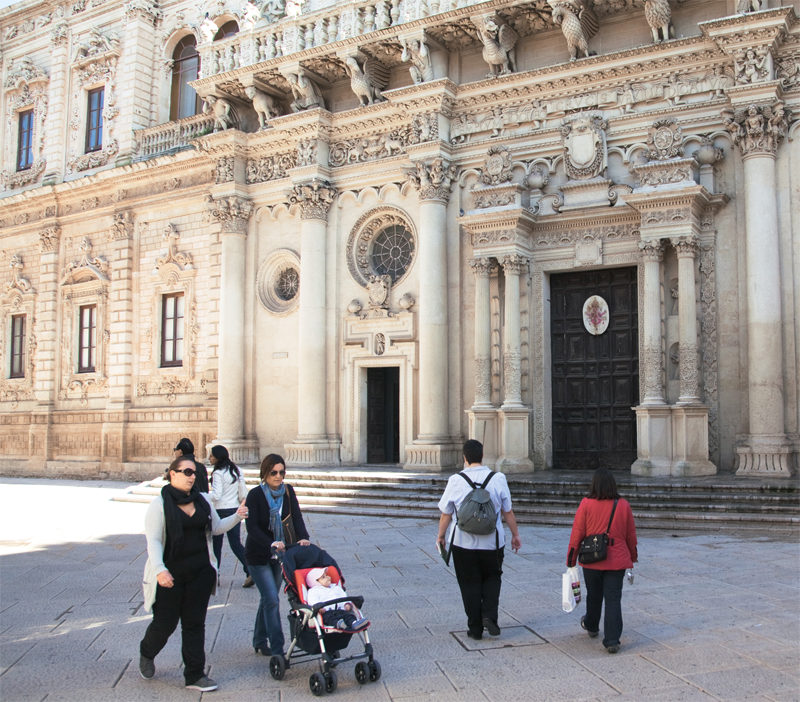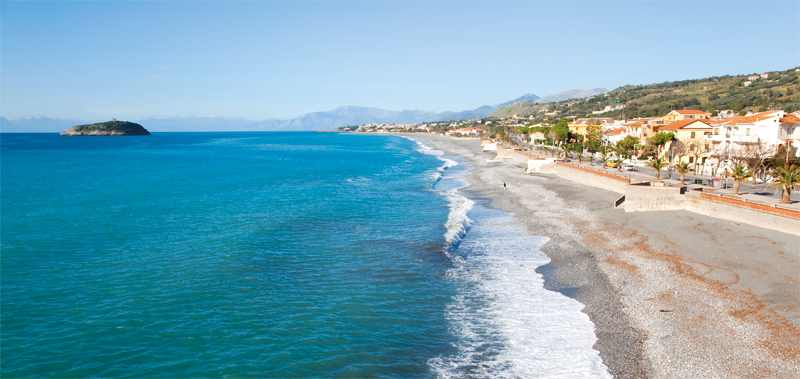< Introducing The South and the Islands
The Best of the South and the Islands

The ornate Baroque façade of Santa Croce in Lecce, Puglia
It would take a month or so to explore Italy’s south and islands
at leisure – it is far better to focus on a particular area. Puglia offers a mix of
Baroque towns, little ports and architectural curiosities, while Sicily adds
volcanoes to the mix. The ancient Roman remains of Herculaneum and Pompeii are
must-see sights, and all around are stunning beaches. In high season, escape the
heat and crowds by visiting the mountains of Abruzzo.
Short breaks
Puglia is a good destination for a week: take in the extraordinary
mathematical puzzle of Castel del Monte and the Baroque carvings of Lecce; let the
kids play hide and seek in the maze-like streets of whitewashed Ostuni; and see the
conical dry-stone huts known as trulli in Alberobello. Then, take in the
beaches of the Gargano
Peninsula or the rocky coast around the Salentine Peninsula, the heel of
Italy’s boot. The easiest small islands to reach are Sicily’s Egadi group, close
to the port (and airport) of Trapani.
Culture vultures
Ancient Greeks, Romans, Normans, Arabs (Saracens) and the Spanish
have all ruled southern Italy, and all left their mark. See the ancient Greek
temples at Agrigento, the old Roman towns of Herculaneum and Pompeii, Frederick
II’s perplexing Castel
del Monte or the glorious Norman mosaics at Monreale, and get
lost in labyrinthine towns such as Lucera and Otranto that retain
the layout of the Arab casbah. Italy’s most flamboyant Baroque towns are to be found
here: Lecce, in
Puglia, and Noto, Siracusa and Modica in Sicily.
Step back into prehistory amid the ancient nuraghi of Sardinia (see Alghero and Su
Nuraxi).
By season
Nowhere along the Italian coast is quiet in high summer, so in
August either head to the cool mountains of Abruzzo’s Gran Sasso or enter
into the Italian spirit, going to the beach after breakfast, home for lunch and a
long siesta, then back to the beach in the late afternoon, followed by an evening
stroll and late dinner – for kids too.
In spring and autumn almost anywhere in the south is lovely, though
the mountainous parts of Abruzzo can still be very cold. These are the best times to
visit popular destinations such as the Amalfi Coast: the
towns come into their own without the summer crowds, and there is great walking in
the mountains behind.
The south is great for winter breaks, with crisp, sunny days and sea
that is warm enough for swimming until October. Carnival brightens up February
throughout the south but especially in Sardinia.

Miles of beautiful beach and turquoise-blue sea of the Maratea
Coast, seen out of season
The great outdoors
Top of the list for kids will be the volcanoes. It is possible to
take a minibus most of the way up Vesuvius, or walk on steaming, stinking fields of sulphur near the town of
Pozzuoli, outside Naples,
and swim in seas heated by underwater fumaroles off the island of Ischia. Volcanic
action is most likely to be found on the Sicilian island of Stromboli; if the
ascent is too tough, the nearby island of Vulcano is easier
to climb, with its eerie landscape of black rock and smoking vents. Etna, Europe’s
biggest volcano, is accessed by cable car and jeep, but the vast lava fields lower
down may impress kids just as much. In winter the nursery slopes of Piano Provenzana
on Etna are an ideal place to learn to ski or, in summer, have a watery adventure in
the nearby Gole dell’Alcantara.
..................Content has been hidden....................
You can't read the all page of ebook, please click here login for view all page.
